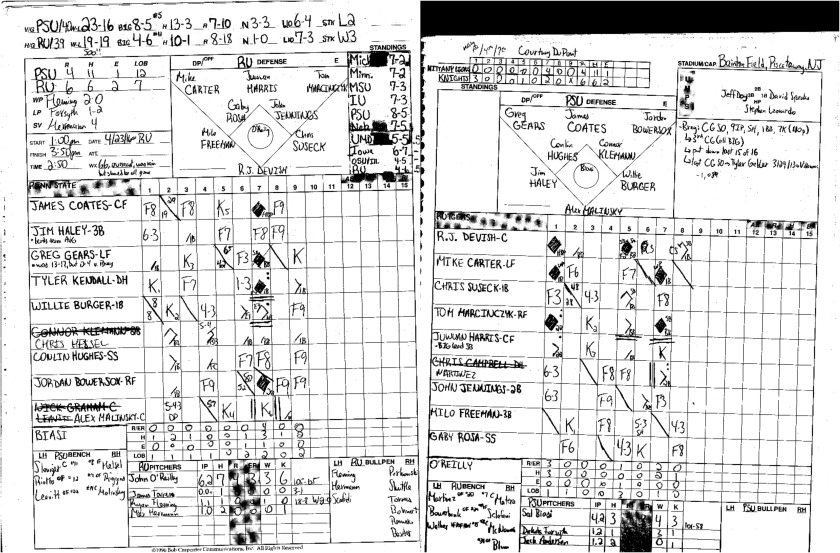With pro baseball already underway and summer collegiate ball right around the corner, this demo video will help you call your best baseball this summer! The quality of a broadcast is invariably a direct result of the amount of prep work the broadcasters involved put into the broadcast. With that in mind, I take a look at two different types of scorecards—one basic, the other more advanced—and discuss not only their layout but also how to best utilize them in setting yourself up for a great baseball call.
The first scorecard I bring up is a basic card from the Sportscasters’ Talent Agency of America website.

STAA is an invaluable resource and well-regarded agency for young and old sportscasters alike, and this card is great for broadcasters just getting into the business. Here is a link to the download file for it. It’s not flashy and includes all the necessary components, but it leaves marginal room for notes. A helpful trick to add extra space is expanding the document from Letter to Legal size, giving broadcasters an extra couple inches of room right on the card to add notes before the game. Even still, this format isn’t the best, and it requires you to print out (and organize) two separate scorecards so that both teams playing in the game are accounted for.
The other scorecard I examine is one designed for TV and radio broadcasters in Bob Carpenter’s Baseball Scorebook.

Carpenter, the current Washington Nationals play-by-play broadcaster on MASN, has created the sportscasting industry standard with this scorebook and hundreds of pro, minor league, and college broadcasters across the country use his book every season. I’m proudly one of them. Like I mention in the video, this scorebook (or some personally-crafted variation) is a necessity for any broadcaster who seriously wants to call baseball games for a living. In addition to all the essentials that the basic scorecard contains, the Carpenter scorecard has so many extra features, from detailed record charts and standings columns to 15 innings of baseball and fielding and umpire alignments. And, of course, there’s lots of space for notes throughout the entire card. Being able to pour all the diverse categories and types of info you need for a baseball broadcast onto a single scorecard is the sum reason why Bob Carpenter’s Baseball Scorebook is so popular among sportscasters.
Whatever scorecard you end up using for your next baseball card, my one word of advice would be to prep until you don’t think you can prep any further. This holds true in all genres and forms of broadcasting—especially here considering baseball’s slow pace—but you cannot fake the prep work once you’re on the air. So how do you prep? Let me know what scorecard you use in the comments below? If it’s something different than the two I discussed, include screenshots so we can compare!
